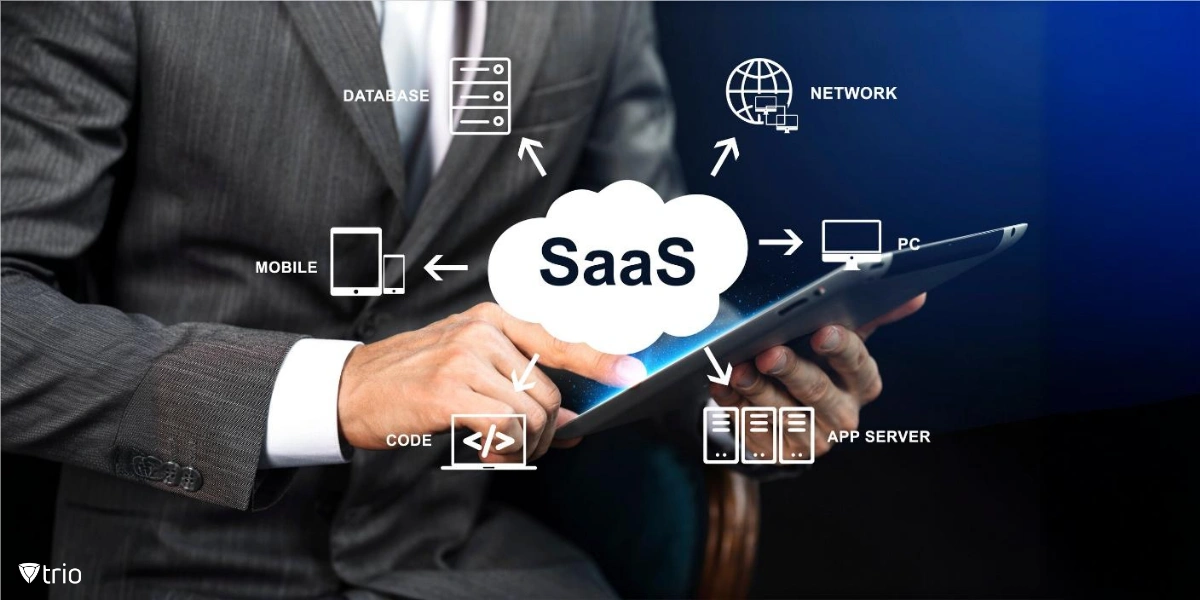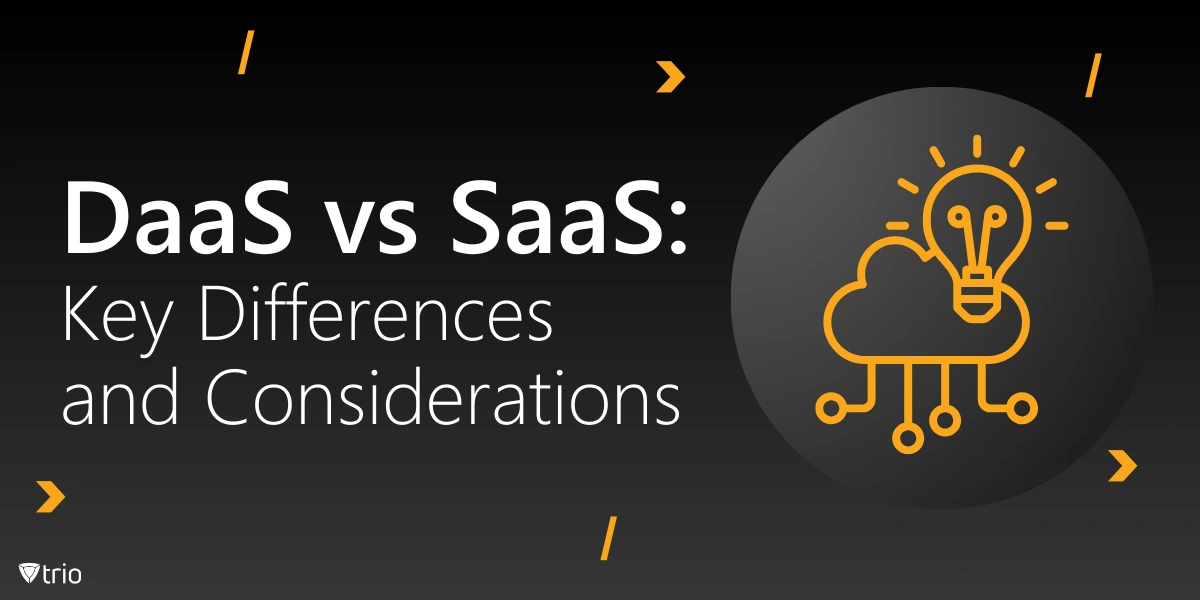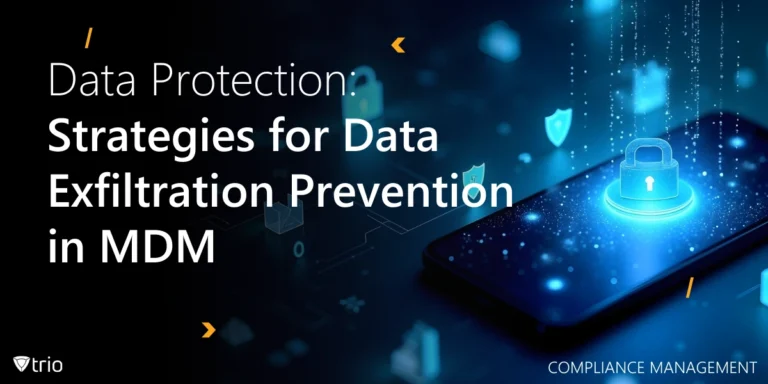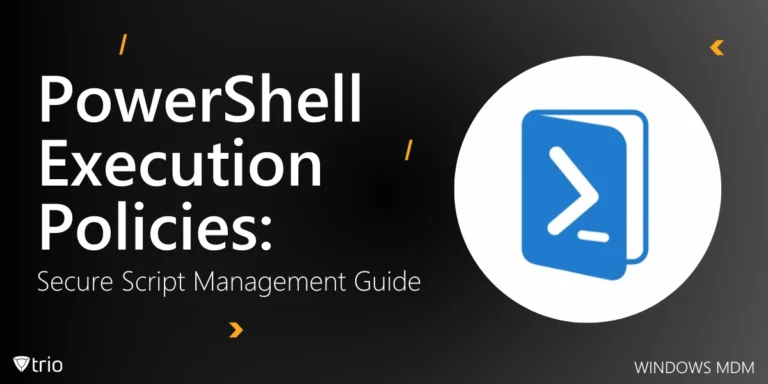The rise of cloud-based solutions is revolutionizing modern IT environments, streamlining operations and enhancing scalability. These advancements have become indispensable for refining IT asset management strategies across industries, offering organizations new ways to optimize their processes and reduce inefficiencies while minimizing the costs of traditional setups.
As organizations navigate this dynamic landscape, “as-a-service” models have emerged as pivotal solutions. They provide unmatched flexibility and efficiency, transforming traditional IT infrastructures into adaptive, scalable ecosystems that align with contemporary business demands, making IT operations simpler and more agile.
Among these models, DaaS (Desktop as a Service) and SaaS (Software as a Service) stand out for their unique capabilities. While DaaS delivers comprehensive virtual desktops, SaaS provides application-based solutions tailored to specific needs. This post compares their features, use cases, and decision-making considerations to guide organizations in making informed choices based on their goals.
What Is DaaS? Key Features and Use Cases
The term DaaS means a model that delivers fully managed virtual desktops hosted in the cloud. These virtual environments provide users with flexibility and continuity, enabling them to work from anywhere with an internet connection, a vital advantage in today’s remote work era.
DaaS software offers robust virtualization capabilities, creating secure and customizable operating environments that can be tailored to diverse organizational needs. This flexibility makes it an attractive choice for businesses aiming to empower their workforce with reliable, scalable IT solutions while reducing physical infrastructure dependency.
Practical DaaS examples include Citrix Virtual Apps and Desktops and Amazon WorkSpaces. These platforms are widely adopted in scenarios like enabling remote workforces, ensuring secure contractor access, and maintaining operational continuity during disruptions, particularly in industries requiring strict data handling protocols.
Organizations adopt DaaS to enhance operational agility and efficiency while maintaining strict control over IT environments. Its ability to centralize management and provide consistent user experiences makes it an ideal choice for dynamic work settings, ensuring productivity and data security at all levels.
What Is SaaS? Key Features and Use Cases
SaaS, or Software as a Service, revolutionizes how organizations access and use software applications. Delivered over the internet, SaaS operates on a subscription basis, offering unparalleled convenience and accessibility to businesses of all sizes, from startups to multinational corporations.
Key SaaS examples include Google Workspace for productivity, Salesforce for CRM, and Zoom for communication. These platforms have become indispensable across industries, offering ease of use, scalability, and seamless integration into existing workflows, enabling organizations to achieve higher efficiency without extensive setup.
One major advantage of SaaS lies in its automated updates and vendor-hosted maintenance. Organizations benefit from reduced administrative burdens and can focus on their core operations without worrying about infrastructure management, allowing teams to allocate resources toward growth and innovation.
SaaS’s flexible pricing models enhance its appeal further, providing cost-effective solutions for businesses seeking agility, scalability, and rapid deployment in application delivery. These features ensure that SaaS remains a cornerstone of modern IT strategies across diverse sectors.

Deployment and Management: Contrasting Approaches
DaaS provides comprehensive operating environments, offering users virtual desktops with full functionality. This model often requires managed IT services for performance optimization, security, and customization to meet specific organizational needs, especially in environments demanding high security.
In contrast, SaaS focuses exclusively on delivering specific applications. Vendors handle updates and maintenance, simplifying deployment and minimizing the need for direct oversight from internal teams, making it a more streamlined option for many organizations with limited IT resources.
While DaaS demands greater administrative involvement due to its broader scope, SaaS appeals to businesses seeking simplified, hands-off management solutions that prioritize ease of use and operational efficiency. Both approaches have their strengths, depending on the context of their use.
Cost, Licensing, and ROI Insights
The pricing dynamics of DaaS and SaaS models cater to different organizational needs and operational strategies. DaaS typically involves per-desktop or per-user pricing, reflecting the comprehensive nature of its service offering and the infrastructure it provides to end-users.
SaaS adopts a straightforward per-user subscription model, ensuring predictable costs and simplifying budgeting processes. This predictability is particularly advantageous for businesses looking to plan long-term financial strategies and maintain budgetary discipline, enabling better allocation of resources.
Effective IT vendor management plays a crucial role in both models. Negotiating licensing agreements, ensuring compliance, and aligning costs with expected ROI are key factors in maximizing the financial and operational benefits of these solutions. Proper vendor relationships can greatly enhance value.
Security, Compliance, and Governance Factors
Security remains a cornerstone of DaaS, with centralized desktops reducing risks such as data leakage and unauthorized access. This model offers enhanced control over sensitive information, particularly in regulated industries where compliance is non-negotiable, ensuring adherence to stringent standards.
Conversely, SaaS prioritizes robust security protocols and compliance certifications. These vendor-provided safeguards ensure adherence to industry standards, instilling confidence in organizations relying on SaaS for critical operations and fostering trust among stakeholders in sensitive data environments.
Reliable IT support is essential for both models. Maintaining governance frameworks and proactively addressing emerging threats ensures sustained operational resilience and compliance with evolving regulatory requirements, safeguarding organizations against potential risks and vulnerabilities.
Scaling and Supporting Growth
Scalability is a defining strength of both DaaS and SaaS. Adding virtual desktops in DaaS or increasing SaaS user counts is a straightforward process, allowing organizations to adapt to evolving demands with minimal disruption and maintain continuity across operations.
Integration with existing systems is a critical consideration for both models. IT support tools play a pivotal role in facilitating smooth operations, addressing compatibility challenges, and ensuring seamless functionality across platforms, making the adoption of these models seamless.
Performance metrics and SLAs should be closely evaluated to ensure both models meet the demands of growth. This evaluation helps organizations maintain consistent service quality and align their IT strategies with business objectives, ensuring reliable and scalable IT infrastructure.
Real-World Applications of DaaS and SaaS
Understanding how DaaS and SaaS are applied in real-world scenarios highlights their importance across industries. DaaS has gained traction among enterprises with distributed workforces, enabling employees to access secure virtual desktops from any location. It is especially critical in sectors like finance, healthcare, and government where data security and compliance are paramount.
On the other hand, SaaS has revolutionized day-to-day operations across a wide range of businesses. From e-commerce platforms utilizing inventory management systems to small businesses leveraging email marketing tools, SaaS empowers organizations with tools that were once accessible only to large enterprises. The integration capabilities of SaaS make it an ideal choice for modernizing existing workflows.
Both DaaS and SaaS cater to diverse operational needs, proving that these models are not mutually exclusive. Organizations can benefit by integrating these solutions to create hybrid environments tailored to their specific requirements, achieving both flexibility and efficiency.

Industry Trends Driving Adoption of DaaS and SaaS
As technology evolves, certain trends are propelling the adoption of DaaS and SaaS models. The rise of remote work has made DaaS indispensable for providing secure, scalable access to desktops, while reducing costs associated with maintaining physical hardware. The pandemic highlighted this need, accelerating the transition to cloud-based infrastructure.
SaaS, meanwhile, continues to dominate due to its versatility and user-centric design. The increasing reliance on AI and machine learning capabilities integrated into SaaS solutions has made them essential for decision-making processes. Additionally, industry-specific SaaS applications are allowing businesses to address niche challenges effectively.
Another key driver is sustainability. Organizations are prioritizing greener operations, and DaaS and SaaS align with these goals by reducing energy consumption and reliance on physical assets. These models not only enhance operational efficiency but also support broader environmental objectives, making them integral to forward-thinking strategies.
Trio’s Unique Approach
Trio’s MDM solutions complement DaaS and SaaS by streamlining and enhancing security measures. By integrating seamlessly with these models, Trio empowers organizations to maintain robust infrastructures that support their strategic goals, ensuring a comprehensive approach to IT management.
Explore the benefits of Trio’s innovative approach to IT efficiency and resilience. Request a free demo today to discover how our solutions can elevate your organization’s capabilities and streamline your IT operations, preparing businesses for future challenges and opportunities.
Conclusion: Making Strategic Choices
Choosing between DaaS and SaaS requires careful consideration of organizational priorities, existing infrastructure, and long-term goals. DaaS is ideal for businesses needing virtual desktops, while SaaS excels in delivering flexible application solutions tailored to specific operational needs in a cost-effective manner.
Long-term goals and infrastructure requirements play a crucial role in this decision. Employing IT change management best practices ensures smooth transitions, optimized outcomes, and alignment with strategic objectives, minimizing disruptions during implementation and scaling phases.
See Trio in Action: Get Your Free Trial Now!
Ultimately, both models offer unique advantages. Their effectiveness depends on how well organizations align cloud strategies with their business objectives, paving the way for innovation and growth while ensuring operational stability and efficiency.
Get Ahead of the Curve
Every organization today needs a solution to automate time-consuming tasks and strengthen security.
Without the right tools, manual processes drain resources and leave gaps in protection. Trio MDM is designed to solve this problem, automating key tasks, boosting security, and ensuring compliance with ease.
Don't let inefficiencies hold you back. Learn how Trio MDM can revolutionize your IT operations or request a free trial today!




